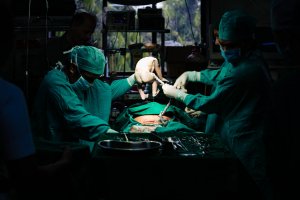Around 1 in every 4 pregnancies ends with C-section in the UK, and around 21% globally. This is an increase from around 12% in 2000. It’s a controversial topic for many, but what isn’t focused on so much is the repercussions and after care of the scar and the woman bearing it.
 Many scars heal well and look minimal beyond the 8-12 week healing period… but many do not. The visual aspect alone can lead to negative feelings and reduced self confidence. Women can suffer pain, pulling, numbness, and in the longer term (even 10-15 years later) can present with symptoms such as:
Many scars heal well and look minimal beyond the 8-12 week healing period… but many do not. The visual aspect alone can lead to negative feelings and reduced self confidence. Women can suffer pain, pulling, numbness, and in the longer term (even 10-15 years later) can present with symptoms such as:
– urinary frequency or urgency
– altered sensation in the lower abdomen or front of the hip
– lower back pain
– pelvic pain or pain on intercourse
– loss of activation in the lower abdominal muscles
How do these things happen?
Essentially, all organs and tissues within the abdomen and pelvis are linked together with connective tissue, and so scarring in one area can and usually will impact the surrounding area. This video might give you an idea of how many layers are involved!
The Caesarean scars are at the front, so if there is tension there from the bunched up scar, the connected areas will also be pulled slightly forwards, for example tilting the uterus forwards (and the cervix backwards). The bladder sits underneath the uterus so can be affected by the reduction of space within the pelvis. The soft tissue around the vagina can be tugged in a certain direction and affect comfort during intercourse.
Tension at the front naturally will lead to increased load at the back of the pelvis, both via the connective tissue and the Uterosacral Ligament which connects the womb and the sacrum. This can be immediate or build up gradually over years, reducing mobility there and causing lower back pain.
The two scars sit one above the other, and can therefore become tethered to each other, limiting the slide and glide of skin and fat over organs, muscle and bone.
The first couple of months after caesarean surgery are characterised by sleepless nights, abdominal pain as the wounds heal, and lots of sitting caring for a new baby. This can lead to an overall flexed (bent forwards) position which lasts indefinitely as it becomes habit and can restrict tissue mobility further.
What can we do about it?
Happily, there is lots you can do, and do at home in small chunks of time, and make good progress. After the healing period of 8-12 weeks, where there is generally good advice available of keeping the scar clean, dry and free from infection, you can start to release your scar and promote its healing to a smooth, mobile line.
How to Massage Your Scar
Ensure your scar is healing well with no infection, weeping or excessive redness. Any stitches should have already been removed. You may feel altered sensation or numbness around the scar initially – this isn’t unusual but just be careful with pressure in these areas. Using these techniques should help to return these areas to normal sensation.
Find a place to relax for 5-10 minutes. That’s all it takes a day! Watch this video for four techniques that will help.